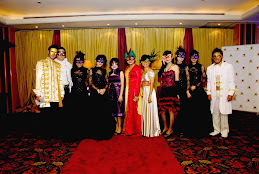
PR 2.0 uses a combination of social media tools that are available to communcations professionals to reach and better communicate with influencers and consumer audiences directly. Social media is a direct-to-consumer approach that allows audiences to drive the communication in their communities. PR professionals are beginning to incorporate PR 2.0 into their strategy and planning as an effective way to communicate directly to Web 2.0 audiences, to raise awareness and increase overall brand exposure.
Brian Solis started promoting the PR 2.0 concept in the 90s and it was specific to how PR, multimedia, and the web would intersect and create new breed of PR/Web marketers. He’s been talking PR 2.0 for almost 10 years. As a matter of fact, PR 2.0 actually started long before the birth of the Social Media Release (SMR). The SMR has been supported and pushed by many influencers, including Tom Foremski’s public outcry for the death of the traditional press releases.
Tom Foremski, a former Financial Times writer, wrote an article in the Silicon Valley Watcher titled, “Die! Press Release! Die! Die! Die!” Foremski’s dramatic call to action demanded changes to the traditional news release. It was this call to action that started a revolutionary transformation.
It was Todd Defren who offered the first template and still remains an authoritative champion; Chris Heuer helped lead an effort to propose a standard for their construction and distribution; Stowe Boyd reminds disingenuous, lazy or opportunistic PR people that they’re not invited to participate in Social Media (and rightfully so); Shel Holtz hosted the original NMRcast, and continues to demonstrate the value of new releases; and Shannon Whitley’swork helps PR “get it;” along with many others who continue to carry the flag forward.
Solis joined Heuer from the onset of the “Working Group” and has since spent most of his free time defending the reasons for the existence of SMRs in blog posts and at conferences, while also carefully practicing what he preaches.
Today, social media tools are accessible to brands large and small to reach audiences who want to control their own communication. In a Web 2.0 world, where thousands of communities are built, the traditional methods of web communication are not suitable. Web 2.0 technology combined with an audience’s desire to build and share content has transformed our industry. As a result, PR professionals are incorporating Web 2.0 resources into their brand’s PR strategy and planning for more targeted and impactful Web communication.






No comments:
Post a Comment